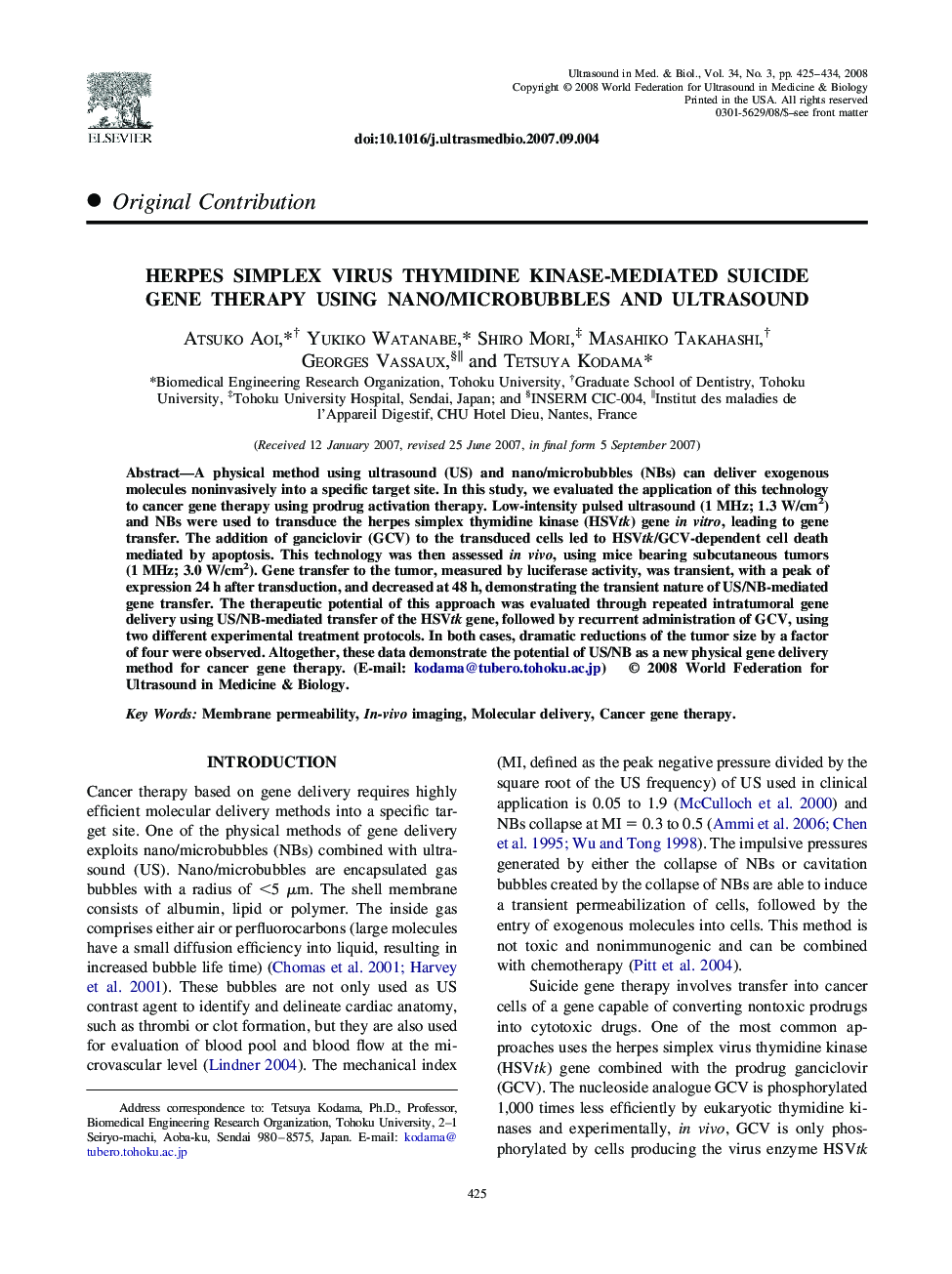| Article ID | Journal | Published Year | Pages | File Type |
|---|---|---|---|---|
| 1761942 | Ultrasound in Medicine & Biology | 2008 | 10 Pages |
Abstract
A physical method using ultrasound (US) and nano/microbubbles (NBs) can deliver exogenous molecules noninvasively into a specific target site. In this study, we evaluated the application of this technology to cancer gene therapy using prodrug activation therapy. Low-intensity pulsed ultrasound (1 MHz; 1.3 W/cm2) and NBs were used to transduce the herpes simplex thymidine kinase (HSVtk) gene in vitro, leading to gene transfer. The addition of ganciclovir (GCV) to the transduced cells led to HSVtk/GCV-dependent cell death mediated by apoptosis. This technology was then assessed in vivo, using mice bearing subcutaneous tumors (1 MHz; 3.0 W/cm2). Gene transfer to the tumor, measured by luciferase activity, was transient, with a peak of expression 24 h after transduction, and decreased at 48 h, demonstrating the transient nature of US/NB-mediated gene transfer. The therapeutic potential of this approach was evaluated through repeated intratumoral gene delivery using US/NB-mediated transfer of the HSVtk gene, followed by recurrent administration of GCV, using two different experimental treatment protocols. In both cases, dramatic reductions of the tumor size by a factor of four were observed. Altogether, these data demonstrate the potential of US/NB as a new physical gene delivery method for cancer gene therapy. (E-mail: kodama@tubero.tohoku.ac.jp)
Related Topics
Physical Sciences and Engineering
Physics and Astronomy
Acoustics and Ultrasonics
Authors
Atsuko Aoi, Yukiko Watanabe, Shiro Mori, Masahiko Takahashi, Georges Vassaux, Tetsuya Kodama,
